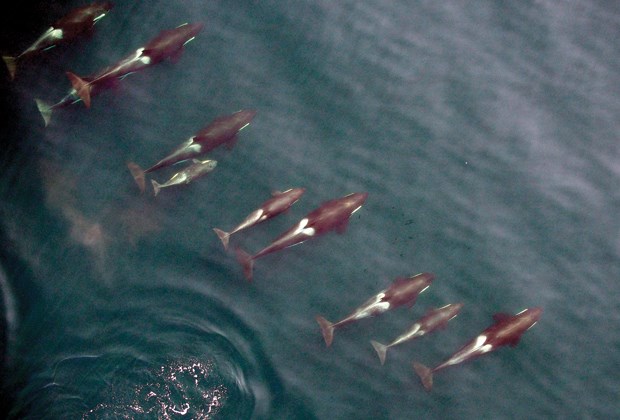A North Vancouver scientist and whale researcher is heading up a team of cross-border biologists who have successfully used drones to monitor the mammals' movements in the wild.
Lance Barrett-Lennard, a North Shore resident and senior marine mammal scientist at the Vancouver Aquarium, teamed up with U.S. researchers from the National Oceanic and Atmospheric Administration last month to monitor a population of northern resident killer whales from an unusual vantage point - the air.
For the first time, scientists used a customdesigned and camera equipped "marine hexacopter" - a drone the size of a remotecontrolled toy helicopter - to fly above the whales in Johnstone Strait.
The drone allowed scientists to get close to the whales without disturbing them, and provided a different perspective than researchers usually have.
"It's hard to see their body condition from a boat," said Barrett-Lennard.
From the air, "You see the width of the animal as well as the length," he said.
The relationship between the two provides important clues about the health of the whales. "We could easily distinguish animals who were nice and plump from animals that were thin," he said.
Of the 77 whales the researchers observed in August, three were "quite thin," said Barrett-Lennard. Two of the three eventually disappeared, and are presumed to have died. The third whale later became entangled in a fishing net, and had to be cut free by the fisherman.
On a more positive note, scientists found by looking from above "we could detect pregnancy very easily," said Barrett-Lennard, by the pear shape of pregnant whales' bodies.
Researchers also got some fascinating footage of the animals' behaviour, including whales chasing salmon, "playing" with "pet" dolphins and frequent contact between the whales.
"They touch each other all the time," said Barrett-Lennard.
Researchers, who included John Durban and Holly Fearnbach from the U.S., first got the idea of observing whales from the air during helicopter flights over the ocean.
The group launched the idea of using drones because they were both far less expensive and far less intrusive than helicopters - so could get much closer to the mammals.
Most of the photos and video was shot from about 30 metres (100 feet) above the whales. But even when researchers took the drones much closer - to within 10 metres (30 feet) - "we didn't see anything that even indicated they noticed the drones," said Barrett-Lennard.
He and other scientists hope to continue using the drones to track the health of the whales over time. That way, if whales show signs of "food stress" by getting thin in a poor salmon year, for instance, governments could respond with changes to limit commercial fishing.
Biologists also hope to use the drones to look at another population of killer whales next summer - the southern resident killer whales sometimes seen in nearby waters including Georgia Strait.
With less than 80 whales, "that's a population that's highly endangered," said Barrett-Lennard. "We want to take a really good look at those next summer."
Another community of orcas - the transient Biggs killer whales - can also be spotted in smaller groups in local waters. Unlike the resident killer whales, the transient eat marine mammals, including seals.



